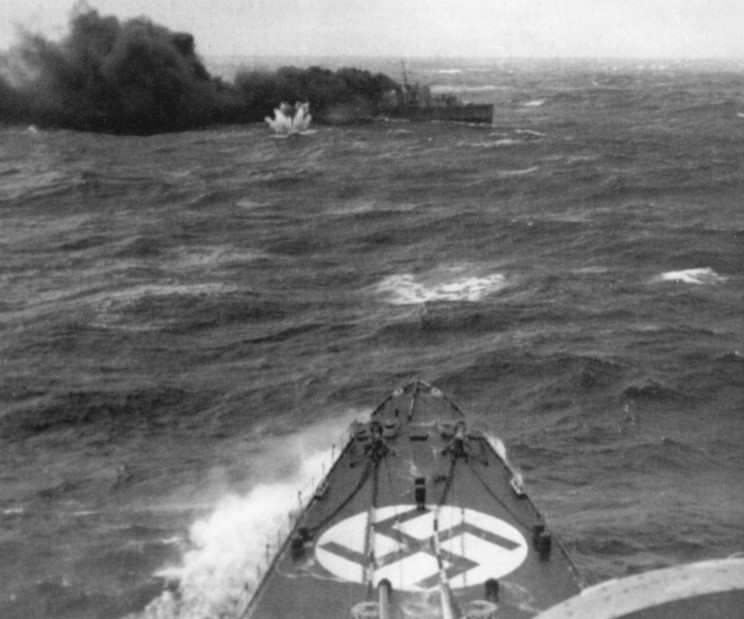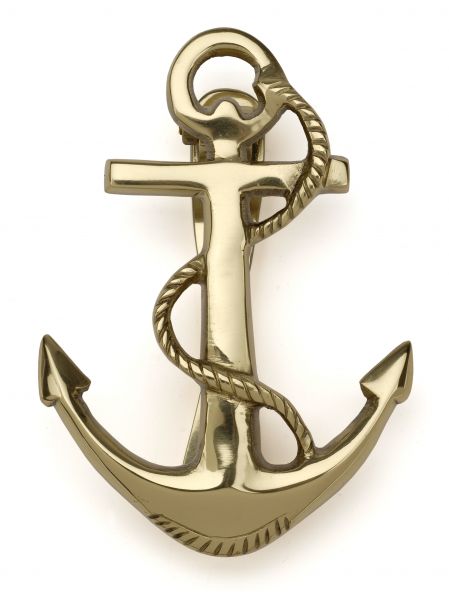

On the morning of 8 April 1940 Glowworm was on her way to rejoin the Renown when she encountered the German destroyers Z 11 Bernd von Arnim and then the Z 18 Hans Lüdemann in the heavy fog around 08:00. The destroyers were part of a German naval detachment, led by the heavy cruiser Admiral Hipper, on its way to land invasion troops at Trondheim as part of the German invasion of Norway (Operation Weserübung). A skirmish broke out and the German destroyers fled, signalling for help.
The request was soon answered by the Admiral Hipper. Although hopelessly outgunned, Glowworm accepted the fight and, while receiving several heavy hits, fired torpedoes at the German cruiser. They missed and, in a final desperate effort to sink or at least seriously damage her opponent, Glowworm then attempted to ram Admiral Hipper. One of the Hipper’s shells hit the Glowworm’s mast. As this crashed down, it caused a short circuit of the wiring, causing the ship's siren to start a banshee wail which nobody was able to stop.
As the ships collided, Admiral Hipper suffered major damage, with a large underwater gash in her bow. With the two ships locked together, Glowworm fired one last shot at point-blank range into the Hipper. Glowworm was pushed under the cruiser's bow and her entire forecastle was sheared off up to the bridge. For several minutes she drifted, on fire, alongside Admiral Hipper, then capsized and sank north-west of Trondheim. 111 of the ship's company were killed and 39 were taken prisoner.
During the engagement Glowworm had broken radio silence and informed the Admiralty of her situation. She was not able to complete her transmission, and all the Admiralty knew was that the Glowworm had been confronted by a large German ship, shots were fired, and contact with the destroyer could not be re-established. In response, the Admiralty ordered the Renown and her single destroyer escort (the other two had gone to friendly ports for fuel) to abandon its post at the Vestfjords and head to the Glowworm's last known location.
At 10:45, the remaining eight destroyers of the minelaying force were ordered to join as well. The Admiral Hipper had meanwhile departed the scene damaged, and made her way to Trondheim.
The Glowworm’s commanding officer, Lieutenant Commander Gerard Broadmead Roope, killed when she sank, was posthumously awarded the Victoria Cross, thus becoming the first VC recipient of the Second World War. The award was justified, in part, by the recommendation of his opponent, Captain Hellmuth Heye of the Admiral Hipper, who wrote to the British authorities via the Red Cross, giving a statement of the valiant courage Lt Cdr Roope had shown when engaging a much superior ship in close battle.
Ship position at sinking:64°27′N 06°28′E.



